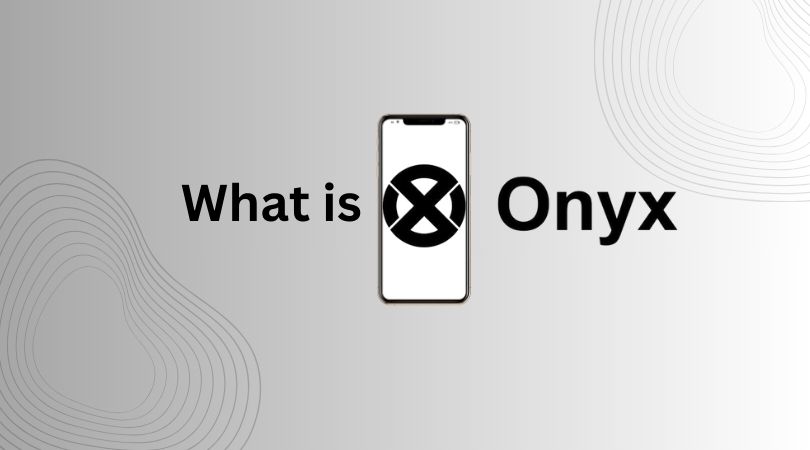The blockchain space is always evolving and new protocols are introduced to address many of its biggest challenges. Scalability is one of the major challenges for blockchain networks. That’s where Onyx Protocol (ONX) comess in.
Onyx Protocol developed secure and scalable blockchain applications, both for business and developers. They provide a solid foundation for producing, storing and moving digital assets that are both secure and at low cost fees.
This article aims to clarify highlights of Onyx Protocol from history right through to its native token XCN and which role it plays.
What is the Onyx Protocol?
Onyx Protocol is a scaling solution on Layer 3, making transactions faster, cheaper and ensuring even greater security compared to typical Layer 1 networks like Ethereum or Bitcoin or Layer 2 solutions like Polygon which just enhance efficiency sitting atop of Layer 1 networks.
Onyx, on the other hand, builds up on top of both Layer 1 and Layer 2, providing additional optimization for businesses and developers.
The protocol is especially useful for banking institutions or big companies thinking of integrating blockchain technology. It is practical and streamlined so companies without the high costs and technical challenges.
Who Created the Onyx Protocol?
Onyx Protocol was the creation of Adam Ludwin that year 2014, when he was a venture capitalist passionately focused on blockchain solutions. Their project started at first under the name Chain Core and initially it was aimed at serving enterprise blockchain apps. Gradually it evolved into what is now the Onyx Protocol.
In 2018 the company was acquired by Lightyear Corporation which later became part of Stellar Development Foundation. However, Onyx stayed independent and adapted to consumer needs leveled especially to business with further deployment of blockchain technology.
History of Onyx Protocol
The journey of Onyx Protocol has been marked by continuous improvements and innovations. Some key milestones include:
- 2014: Founded as Chain Core, focusing on private blockchain solutions.
- 2018: Acquired by Lightyear Corporation and integrated into the Stellar ecosystem.
- 2020: Rebranded to Onyx Protocol, shifting focus to Layer 3 scalability solutions.
- 2022: Released the Onyx V3 Whitepaper, introducing major upgrades in security, speed, and interoperability.
How Onyx works
The Onyx Protocol is here to enhance the efficiency of blockchain networks ro work smoothly. It speeds up transactions significantly, bringing down fee costs as well and providing better security. Here is how it works”
- Layer 3 Scaling With Onyx: Onyx adds another layer on top of Layer 1 and Layer 2 blockchain systems, speeding up transaction processing without compromising decentralization. This way each step in information transfer is faster and more efficient.
Issuing and Storing Assets: Companies can issue digital assets and manage them by using Onyx built-in smart contracts.
- Transaction Security: The network depends on a group of block signers who validate transactions. Their role is vital in ensuring that the whole network is stable and running steady.
- Smart Contracts and Automation: Developers build exciting decentralized apps using Onyx flexible programming framework.
By taking advantage of these features, Onyx delivers a smooth and cost effective solution for adoption of blockchain technology.
Understanding the Onyx Protocol token (XCN)
XCN token, also known by some as Onyxcoin, is the native crypto of the Onyx ecosystem. This token is important for governance, staking and payment within the network.
Key Functions of XCN:
- Transaction Fees: XCN is used to pay for services and trades inside the network, offering reduced fee compared to other blockchain networks
- Staking and Rewards: Users can stake your XCN tokens to secure the network and earn passive income.
In 2022, Onyx changed its token from CHN to XCN. They did this through a conversion rate of 1 CHN exchange for 1,000 XCN. The change was made with plans to improve liquidity and usage of this token within the broader crypto ecosystem.
How to use XCN Token

There are different methods for using XCN with the ecosystem of Onyx:
- Participation in Governance: Vote on proposals that will shape the future of the network.
- Payments and Fees — Use XCN to pay for services within the protocol.
- Putting tokens to staking to get rewards: By locking up XCN you can earn rewards.
- Running a node on the Onyx network requires XCN. Central to that protocol are its nodes as they form part of the infrastructure.
XCN, with an issuance total of 48.4 billion tokens, is crafted to power the ecosystem of Onyx and to encourage long term adoption with incentives.
Future of Onyx protocol
Looking ahead, Onyx Protocol has ambitious plans for expansion. Key focus areas include:
- Enhancing DeFi Applications – Onyx is working on new financial-grade solutions tailored for the decentralized finance (DeFi) sector.
- Improving Network Security – Future updates will strengthen security and decentralization.
- Growing Partnerships – Onyx is forming collaborations with businesses and blockchain projects to drive mainstream adoption.
- Community Growth & Engagement – The team is focused on increasing user participation through incentives and governance improvements.
Conclusion
Onyx Protocol is now emerging as a powerful solution for scaling for Layer 3—it makes transactions quick, low fees, and easy integration. This solution matters as a promising prospect for big firms who get to leverage blockchain technology yet are spared high costs and complexity.
Onyx protocol is setting itself apart in the world of blockchain, thanks to strong community support, outstanding partnerships and ongoing innovation. People in the world of finance, developers and anyone who is curious about the cutting edge of technology would be wise to keep their eyes on this project.






